Having a decent-sized (or just a bigger) piece of land is something many preppers dream of. Not only does it allow some space between you and the neighbors, but it becomes a resource you can use to be more self-sustaining.
Whether this means getting a couple of meals from a small garden, keeping a few chickens, or going full-scale homestead, it is a comforting part of your safety in uncertain times when you can get some of your nutrition from your backyard.
But what about the nutrition of your livestock?
While this is not something many people think of beyond finding a store to supply a commercial feed, it is a crucial part of your animals’ health, and, by extension, your health. And if SHTF, you may be the only one in charge of your health.

In this article we will be talking about the considerations you need to make for options, cost, and nutritional value of your livestock’s feed.
Why is Nutrition Important?
There are billions spent globally on animal nutrition each year, and countless books on it for everyone from factory farmers to 3-chicken households. In all circles, it is acknowledged that meeting the basic nutritional needs of animals will allow them to grow well and prevent them from getting any diseases that result from nutrient deficiency.
In some circles, it is recognized that getting the most natural and nutrient-dense feed they can will not only keep your animals healthy, happy, and nourished, but eliminate the need for things like antibiotics, vaccines, hormones, and veterinary care.
These and many more pharmaceutical crutches are required in the conditions of highly industrialized operations in order to keep their animals alive, no less with a profit. But anyone keeping animals to feed themselves on their own land need only provide the right nutrition (and conditions, to a lesser extent) to keep perfectly healthy animals.
Now, this doesn’t have to mean buying completely organic, soy-free, GMO-free, gourmet, name-brand, top-of-the-line feed. But if you don’t pay attention to nutrition in any capacity, it is likely you are going to have sick, nutrient-poor animals.
Nutrition
Let’s get an understanding of nutrition before we start, because, let me tell you, there are a lot of different ideas of it out there.
At the most basic level, everyone has an understanding of the elements required. All animals need carbohydrates, protein, fat (for non-herbivores), vitamins, and minerals. If any animal doesn’t get enough of these, it can cause stunted growth and diseases arising directly from nutrient deficiency.
An understanding that only goes this far will get you to commercial feed. These formulas provide the correct percent of iron, the correct percent of protein, etc.
But what are they lacking?
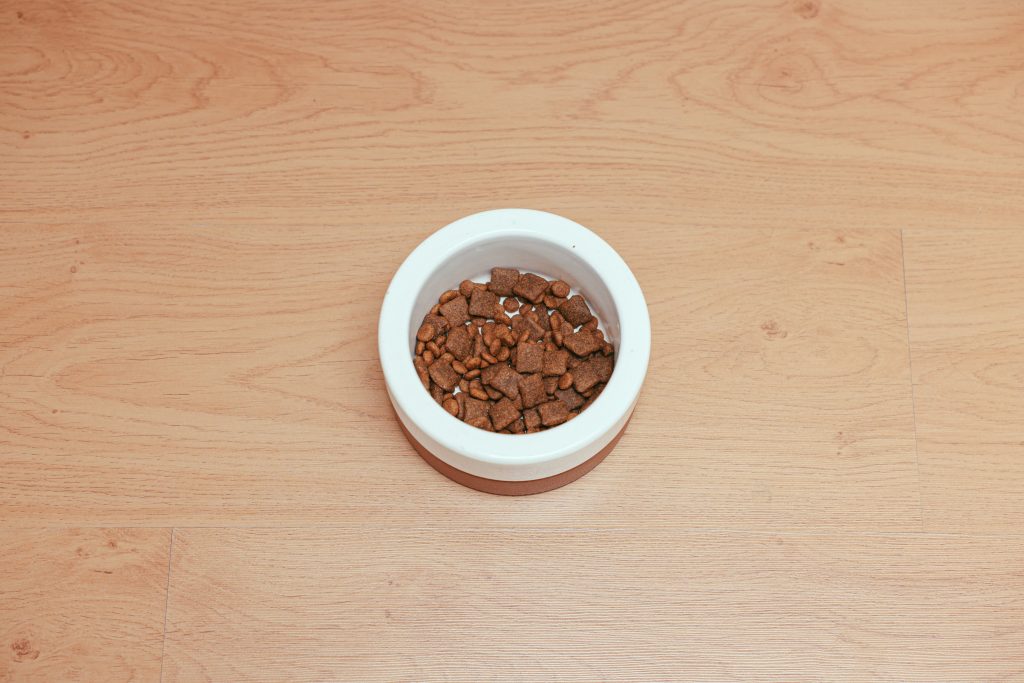
Quality of Ingredients
With this fairly typical school of thought, animal feed formulas need only reach the percentages found by research studies that will make an animal grow.
(While it is beyond the scope of this article, know that these percentages are contended. You may need almost no vitamin C, for instance, if you are constantly fed antibiotics, but if you plan on fending pathogens off with the immune system, you’re going to need more.)
This means that whatever substance can make those numbers add up is fair game. Largely, these substances are the byproduct of other agricultural industries. The grains are either whole or, more often, the remains of the grains after they have been used for milling, brewing, or oil extraction.
Oils get added back to feed either from plant sources or animal sources. And for animals that require more protein, there is meat, feather, or bone meal from unwanted animal parts coming out of slaughterhouses.
The above is how things run if everyone has good intentions and is following the laws. There are also instances of contamination such as the melamine pet food recall of 2007, in which imported wheat gluten was intentionally contaminated with a different protein that was very difficult to differentiate even in a lab and was killing the dogs and other pets that were eating it.
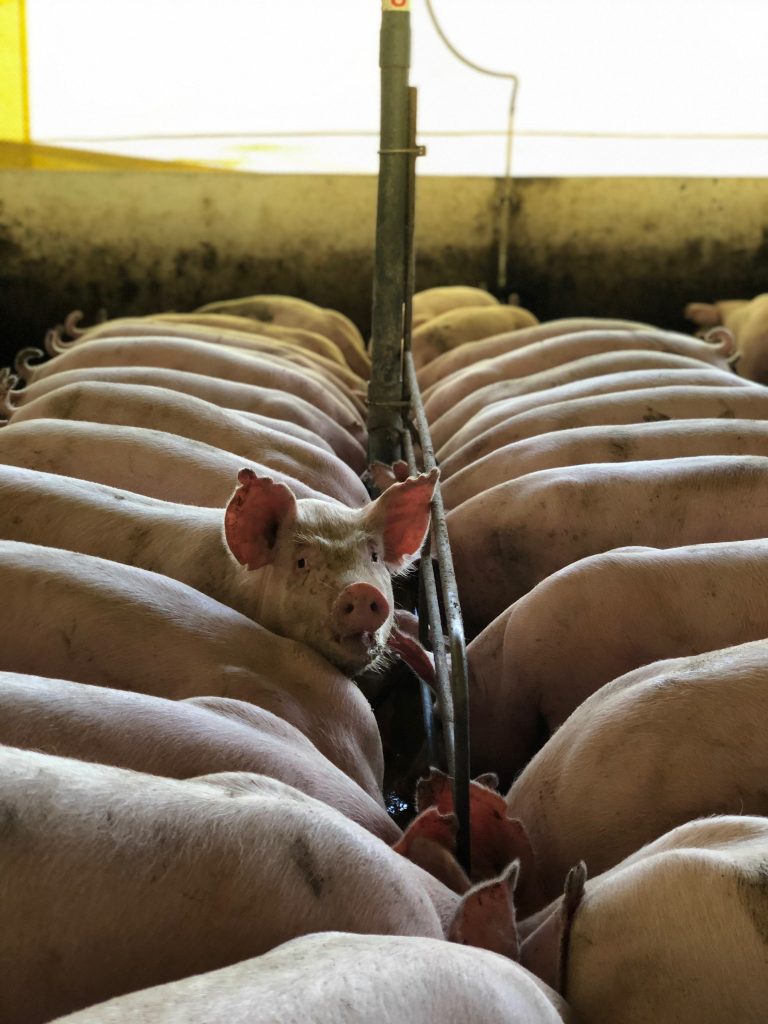 All of these strategies, legal or illegal, are in the name of making animal feed as cheap as possible—and waste (byproduct) is cheap. Quality of ingredients is not being prioritized for feeds like this. And make no mistake, there is a difference between animals directly consuming weeds, grasses, acorns, and insects grown in nutrient-filled soil and animals eating two species of plant grown on nutrient-stripped, chemically-treated soil before being highly processed for half of their chemical makeup then compacted into pellets for lengthy storage and shipping.
All of these strategies, legal or illegal, are in the name of making animal feed as cheap as possible—and waste (byproduct) is cheap. Quality of ingredients is not being prioritized for feeds like this. And make no mistake, there is a difference between animals directly consuming weeds, grasses, acorns, and insects grown in nutrient-filled soil and animals eating two species of plant grown on nutrient-stripped, chemically-treated soil before being highly processed for half of their chemical makeup then compacted into pellets for lengthy storage and shipping.
Holistic Food
I definitely just hinted at this idea, but I’m going to say it outright here. Every animal has been made to eat whole food, and micro-components of these are not digested the same way.
The simplest example of this is in the vitamins and minerals added to food. When these compounds are extracted in pure form, they have none of the innumerable biochemicals that come associated with them in whole food, in the ways our bodies recognize and know how to interact with.
In fact, in order to extract them and put them into a solid form that can be put in a jar and added to food later, many of these compounds are converted to the forms in which they are found in rocks. Instead of being part of an organic compound, they are part of an inorganic one.
This changes how the nutrient interacts with your cells as they are integrated, and it changes the amount of the nutrient you are actually metabolizing from the powder you are ingesting. In the supplement industry, this is widely known as absorption rate.
Simply, “component food” does not have as much nutrition to offer as whole food, and this is one place commercial feed is lacking.
Governmental Control
On a very different note, there is a consideration to be made about availability and quality control on commercial feeds.
The USDA and FDA set the regulations for what is allowed in feed, and their rules are what goes. In other words, the cheapest feed doesn’t do things any better than the minimum requirements. I’m likely speaking to the choir on this, but you can probably guess that these governmental agencies don’t have a great track record on this.
For instance, it was only in 1997 that they outlawed the use of bovine-origin animal byproduct in cows’ feed. This was due to a disease, bovine spongiform encephalopathy, which was reintroduced to cows through eating, yes, the brains of other cows. Highly processed brains.
An arduous online search through many a contentious and hot-tempered argument regarding health, agriculture, and the government’s involvement in them will reveal, if nothing else, what a big deal people make of this.
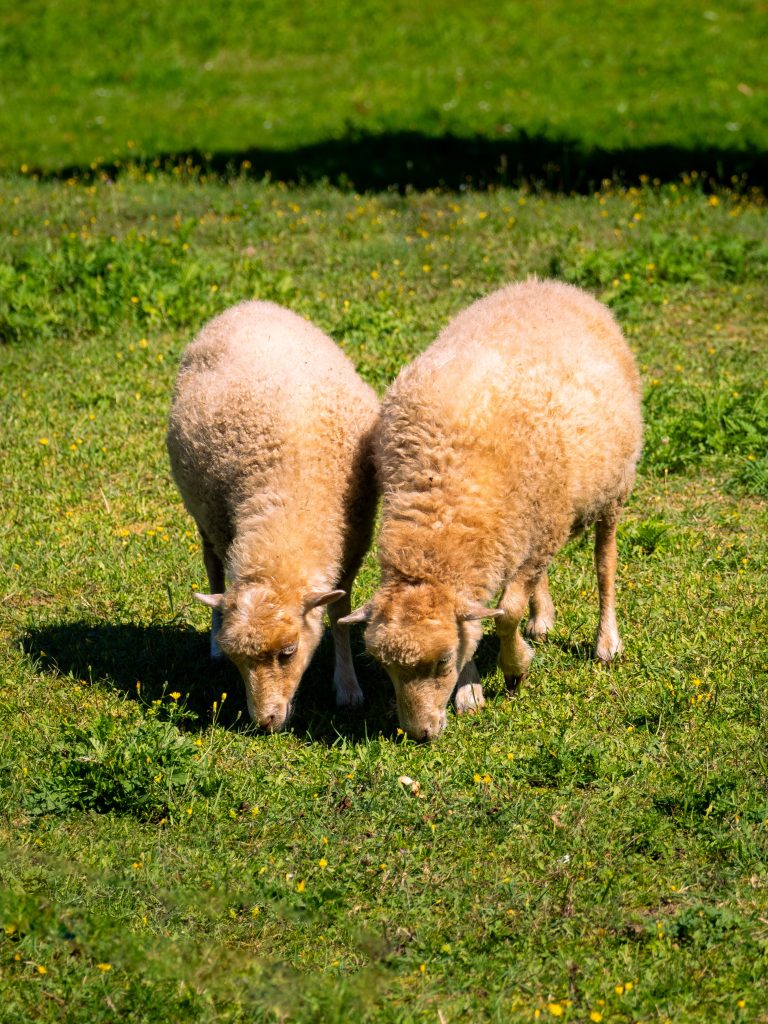
In the briefest way I can explain this, the mega-ag companies are the ones the government has their fingers in, and through this connection, if the government wants to control your bought food supply, they can. If they want to target people who are growing their own food, they aren’t going to do it by regulating human food but by regulating animal feed.
Final Thought on Nutrition
I have only covered where commercial feed based on percentages is lacking. Reasons for wanting more than that for your animals are going to lie in a slightly (or very) different view on nutrition.
To be the kind of person who wants more natural food for you or your animals, you will at least need to have the opinion that a lack of nutrition can suppress the immune system, allowing for vulnerability to pathogens. You may even go so far as to believe that whole, living, God-designed food nourishes the body and soul in ways we may not even understand and certainly fits into the natural design of health and vitality.
If you are in the former camp, natural food is a way to save on the cost of pharmaceuticals for sick animals or just losing your animals to disease. If you are in the latter, realizing all of the ways to properly feed yourself and the animals in your care can be a revolutionary change in your life.
How to Pick an Option for Your Situation
Now, I covered a lot of scary stuff, but there is a good amount of leeway in this debate. There are companies that aren’t the worst of the worst, that make half an effort to get the best food they can while making concessions in other areas for the price. There are some all-out best-quality-possible ones.
You can also find ways you can temper your reliance on feed. Your animals aren’t at the mercy of Purina. There are gray areas in the food that is available out there.
Mostly I want to tell you, all of this is not to say that you can’t use commercial or store-bought feed. Everyone’s situation is different, and I’m a big proponent of respecting the decisions people make for themselves. There are absolutely cases where using cheap, store-bought food is the right choice.
For example, we buy the cheapest cat food out there for our outdoor cats, dyes and byproducts and everything. It helps us to keep from spending too much and it works for our cats’ health because they are good at supplementing themselves by hunting.
So the important thing is to be informed about your options and then choose what works best for you. Here are some non-commercial feed options to get you thinking.
Free-Range
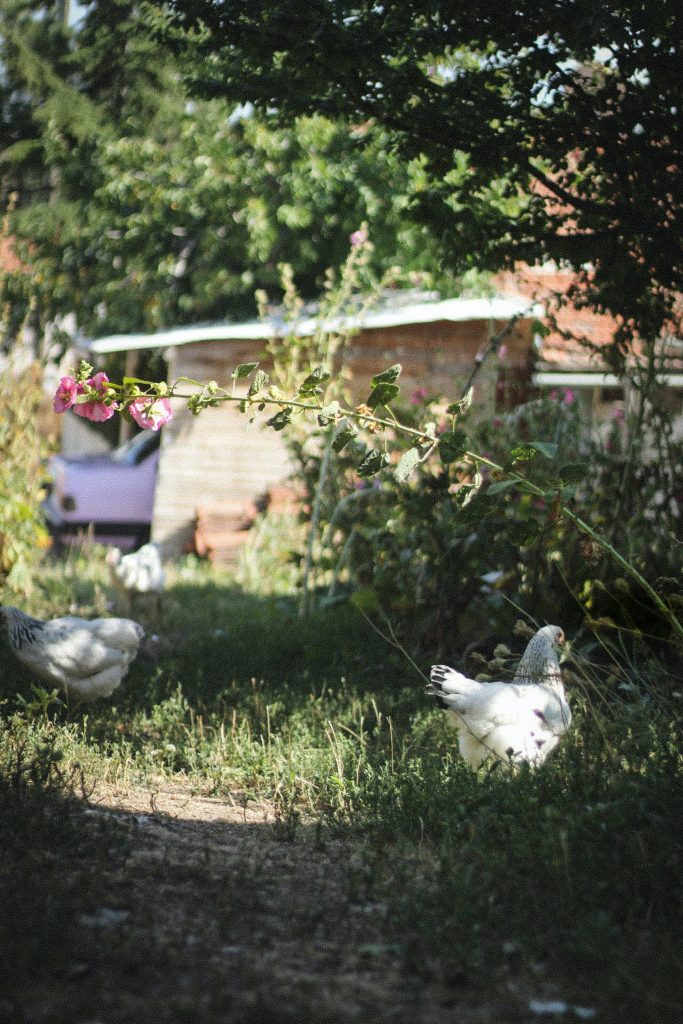
Depending on the animal and your property, you may be able to free-range your animals. Cows are easiest to keep when they are free range and can feed themselves straight from the ground. Chickens only need a small yard where they can find a huge variety of plants and insects to supplement their diet.
Other animals, like pigs and goats, may be more limited by their fencing and require someone to bring plant matter into their pen for “free-ranging.” Or free-ranging might not be feasible at all for your situation.
If it is, it is a fantastic way to make sure your animals have the nutrition they need. Anything they can find in a plant or insect (which, when they come from the wild, come in many more varieties than you could ever think to provide) will be icing on the cake of whatever feed they have access to.
It comes with the added bonus of giving them enrichment so they can live how they were made to. The ability to express their innate behaviors while foraging is an important part of health. It’s true that happy animals make for healthy and less disease-prone animals.
Homemade Food
I cannot speak from experience on this one, but there are those who grow all of their own food for their animals. This does require a more specific knowledge of your animals’ nutrition requirements, as you do not want to accidentally miss out on an important nutrient, but as a general rule, variety covers all ills. If they are eating one type of grain, they may not be getting enough potassium or what have you. But if they are eating a variety of grains and leaves and kitchen scraps and bugs, they will be bound to get a little bit of everything they need.
Health-Conscious Feed Companies
This is primarily what my household relies on, along with free-ranging. Especially as health-consciousness spreads from human food to animal food, there are more and more companies offering or specializing in health-focused feeds.
The specifics of the feed you get are going to vary depending on what you believe matters. For some, that is organic, for some it is no soy, for some it is simply making sure herbivores are eating plants and not animals. But it doesn’t take too much looking around to see which companies are taking a more complex view of nutrition into account and which ones aren’t. These are the ones where you can be sure to get something that has the convenience of being store-bought while still nourishing what will ultimately become your food source.
Self-Sustainability
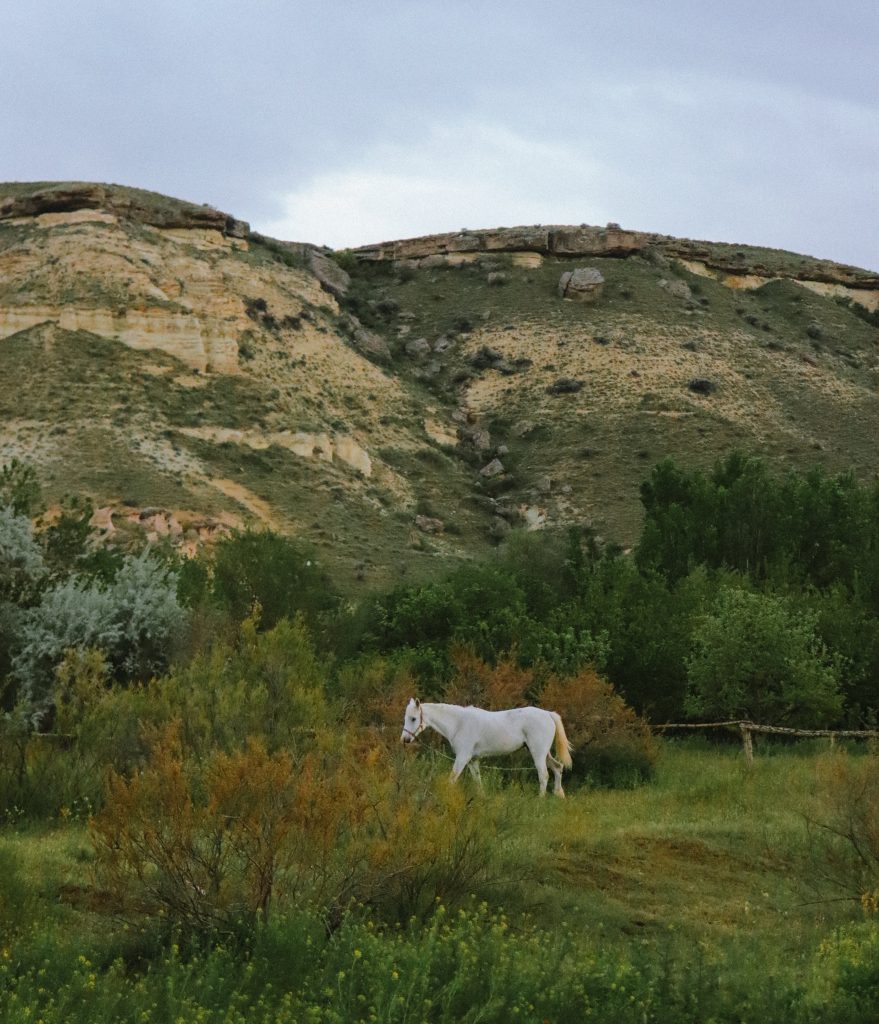
Lastly, I want to take a moment to address self-sustainability.
The animals you have on your land are not just renting space. When you set them down on your land for the first time, they are entering a local ecosystem, primarily through what they eat. If you can get your livestock involved in that ecosystem, it will make your whole farm or homestead more sustainable.
Instead of taking food from a supply chain and from other people’s land, you can start to take from your own, and instead of cleaning out hazardous waste from the barn, you can compost and get more nutrients in your veggies too.
Self-sufficiency goes beyond just feeding and into farm management generally, but feeding is a big factor. There are many ideas out there, but I would recommend getting started learning about rotational grazing and composting.
Conclusion
Keeping livestock can be a huge step to making yourself prepared and capable of sustaining you and your family during hard times.
Learning how to do so reliably is a learning curve, but well worth the time and adventures put into it, and nutrition is one of the keys to being successful.
Well-armed with the knowledge of your options, you can go out and make the best choice of feed for your family, your land, and your animals.
=====
Become a Survival Dispatch Insider …
We bring together survival enthusiasts and preppers to share skills and knowledge, so you can enhance your preparedness for emergencies and ensure the safety of you and your community.
The Results You’ll Get …
Our community, courses, and memberships are pretty special. We’re focused on the ways it will make a huge difference in your life.
Here are a few of the things you’ll be able to do as a member of Survival Dispatch Insider …
1) Improve your emergency preparedness by learning survival skills and strategies from experienced preppers.
2) Build lasting connections with like-minded individuals that share your passion for safety and readiness.
3) Access a wealth of knowledge and resources to assist in protecting you and your community during unexpected situations.
Click HERE to get started.
=====
